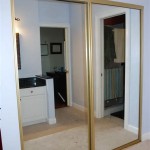How Do I Mirror My Computer to Apple TV?
Mirroring a computer screen to an Apple TV can significantly enhance presentations, entertainment experiences, and overall productivity. This article explores the various methods available for mirroring, catering to both Mac and Windows users.
AirPlay Mirroring from a Mac
Apple devices offer seamless integration through AirPlay, a proprietary technology designed for wireless streaming and screen mirroring. For Macs running macOS Monterey or later, AirPlay mirroring is readily accessible.
To initiate screen mirroring, click the Control Center icon in the menu bar. Locate the "Screen Mirroring" option and select the desired Apple TV from the available devices. If the Apple TV doesn't appear, ensure both devices are connected to the same Wi-Fi network and that AirPlay is enabled on the Apple TV. Once connected, the Mac's display will be mirrored on the television screen.
Users can choose to mirror the entire display or use the Apple TV as a separate display, extending the workspace. This feature provides flexibility depending on the user's needs, allowing for a customized mirroring experience.
AirPlay Mirroring from Older Macs
Older Macs running macOS versions prior to Monterey might need to use the AirPlay icon in the menu bar, which usually appears when an Apple TV is on the same network. Clicking on the icon will present a list of available Apple TVs to choose from. If the AirPlay icon is absent, users may need to check their system preferences and ensure AirPlay is enabled.
Mirroring from Windows PCs
While AirPlay is native to Apple devices, Windows users aren't left out. Third-party applications provide the necessary functionality to mirror a Windows PC screen to an Apple TV.
Several reputable applications are available, some offering free versions with limited features or trial periods, while others require a paid subscription. When selecting an app, consider factors such as ease of use, features offered, and customer reviews. Ensure the chosen application is compatible with the Windows operating system version and the Apple TV model.
Once an appropriate application is installed, its interface will typically guide the user through the connection process. Similar to AirPlay, users will need to ensure both the PC and Apple TV are on the same network. The application may require selecting the Apple TV from a list of detected devices before initiating the mirroring process.
Troubleshooting Connection Issues
Occasionally, connectivity problems can arise. If mirroring fails, several troubleshooting steps can be taken. First, check that both the computer and the Apple TV are connected to the same Wi-Fi network. Verify that the network is functioning correctly, and consider restarting both devices. Outdated software can sometimes cause compatibility issues. Ensuring the latest software updates are installed on both the computer and Apple TV is crucial.
For Windows users employing third-party apps, verify the application is correctly configured and that any necessary firewall exceptions are in place. Consulting the application's documentation or support resources can provide specific troubleshooting guidance.
Optimizing Mirroring Performance
For a smooth and lag-free mirroring experience, network performance is paramount. A strong and stable Wi-Fi connection is essential. Minimizing other network traffic during mirroring can help improve performance. Closing unnecessary applications or downloads on the computer and other devices on the network can reduce bandwidth congestion.
Some mirroring applications may offer settings to adjust the streaming quality. Reducing the resolution or frame rate can improve performance, especially on slower networks. Experimenting with these settings can help find an optimal balance between image quality and smooth playback.
Hardware Requirements and Considerations
While most modern computers and Apple TVs support screen mirroring, checking compatibility before attempting to connect is wise. Ensure the Apple TV model supports AirPlay, as older generations may have limited functionality. For Windows users, verify the chosen third-party application's system requirements to ensure compatibility with the PC's hardware and operating system.
The quality of the mirroring experience can also depend on the Wi-Fi router's capabilities. A router that supports the latest Wi-Fi standards generally provides a better connection, leading to improved mirroring performance.
Wired Connections for Enhanced Performance
Though wireless mirroring offers convenience, wired connections provide superior stability and performance, especially for demanding tasks like high-resolution video streaming or gaming. If an Apple TV is equipped with an Ethernet port, connecting it directly to the network router via an Ethernet cable can significantly reduce latency and improve the overall mirroring experience. For computers with an available Ethernet port, a wired connection is also recommended for optimal performance.

Best And Easy Ways To Mirror Windows 10 Apple Tv

How To Airplay From Pc Or Laptop Apple Tv

Use Airplay To Stream What S On Your Mac An Hdtv Apple Support

Best Ways To Mirror Pc Apple Tv

How To Airplay From Pc Or Laptop Apple Tv

Stream Audio And From Your Mac With Airplay Apple Support

How To Mirror Pc Apple Tv

How To Mirror A Mac Tv Osxdaily

Connect Pc To Apple Tv Mirror Wireless Bluetooth

How To Use Apple Airplay Mirror Your Iphone Mac Screen On Tv Roku And More Cnet








